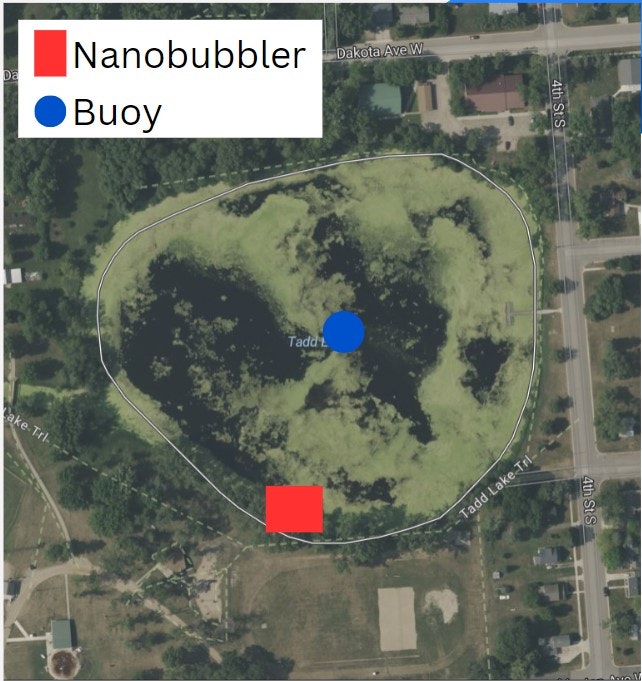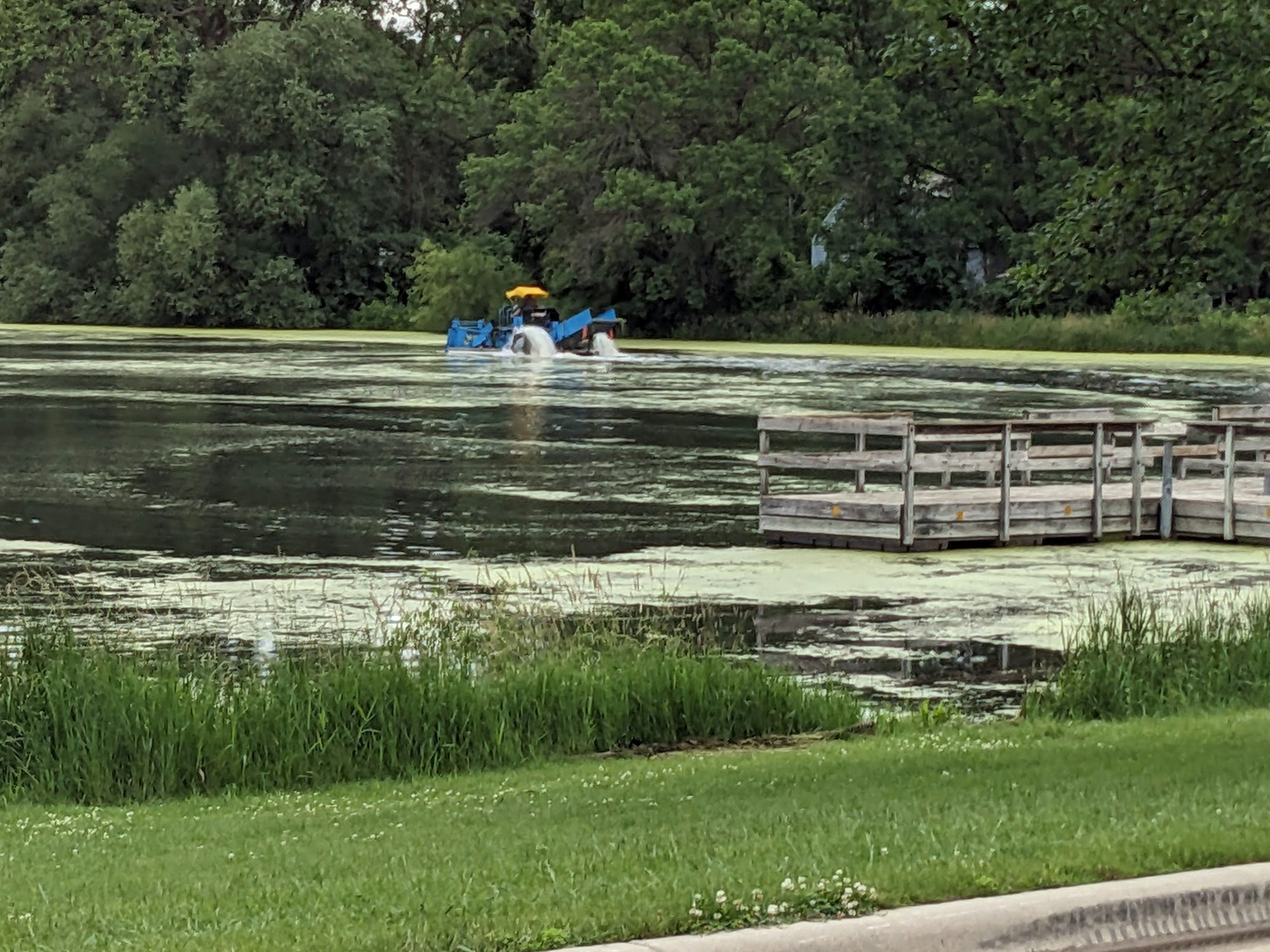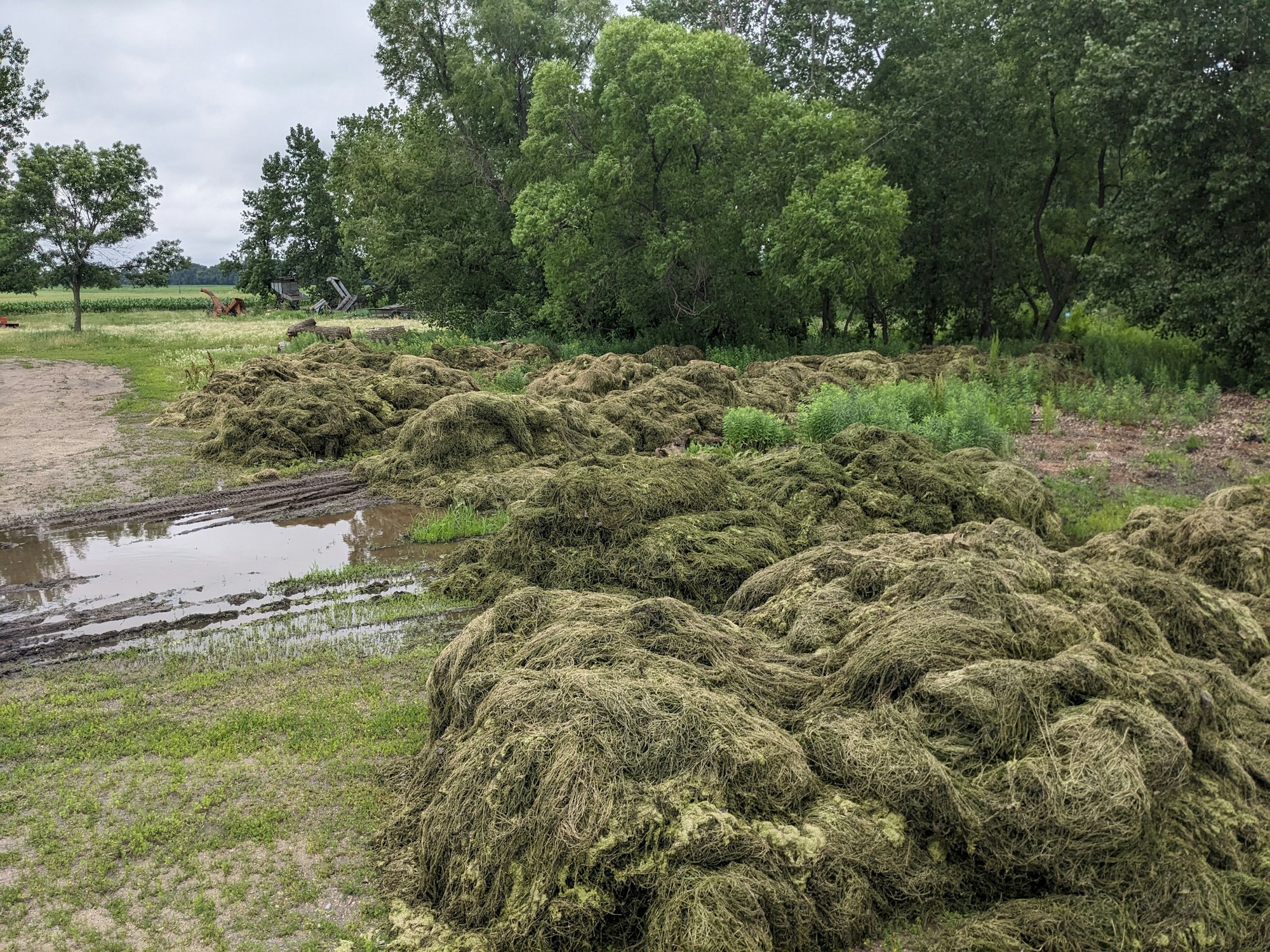Tadd Lake Nanobubble Pilot Project 2024

The MFCRWD , in partnership with the City of Atwater, carried out the Tadd Lake Nanobubble Pilot Project in 2024 to explore ways to improve water quality conditions and reduce algae in local lakes. The project took place on Tadd Lake, with Upper Tadd Lake used as a comparison site, and results were later reviewed by Stantec to help assess whether the same approach might be useful for Monongalia Lake or Diamond Lake. Diamond has ongoing algae and nutrient issues while Monongalia has issues with high hydrogen sulfide concentrations. Using Moleaer Inc.’s nanobubbler unit, which the company claims can improve water clarity, reduce sediment, muck, and odors, and increase oxygen levels, the system was installed on June 2 and operated for about three months through late summer.
Tadd Lake is a small, shallow lake directly connected to Upper Tadd Lake, while Diamond Lake is much larger and deeper. The nanobubble system was designed to increase oxygen levels throughout the water, which can support lake health and potentially limit algae growth. However, several factors made it difficult to evaluate results clearly. There was little to no water monitoring data before the system was installed, sampling began only a few weeks before treatment started, and mechanical weed removal took place during the same period. Unusually heavy rainfall in 2024 also influenced water quality results.
















Stantec’s review found that oxygen levels near the bottom of Tadd Lake remained low through most of the summer, meaning the nanobubbles likely did not reach the deepest layers where nutrients can be released from sediments. Because most of Monongalia and Diamond Lakes' nutrient problems come from external sources like watershed runoff rather than the lake bottom, nanobubble treatment would not likely reduce total phosphorus or algae in a meaningful way. Some improvement in water clarity was seen in Tadd Lake, possibly due to better water circulation and faster breakdown of organic material, but this effect was limited and could also encourage more plant or algae growth due to increased sunlight reaching the bottom.
Limnology Reports from Stantec Engineering are attached below:
StantecDiamondLake_Memo_March2025v2.pdfFinal_BoardMeeting_20250311_DiamondLakeAssessment.pdf
Overall, the project provided valuable information about how nanobubbles perform in local lake conditions, though results were inconclusive. Nanobubble technology may improve water appearance and reduce surface muck, but it is not expected to significantly reduce phosphorus or harmful algal blooms. Continued and expanded monitoring would be important if future projects are considered.
Special Thanks
We appreciate our partnership with the City in trying to improve water conditions in Tadd Lake! Please reach out with any questions or concerns. For more information about the science behind nanobubble technology, please scan the QR code or visit www.Moleaer.com.

